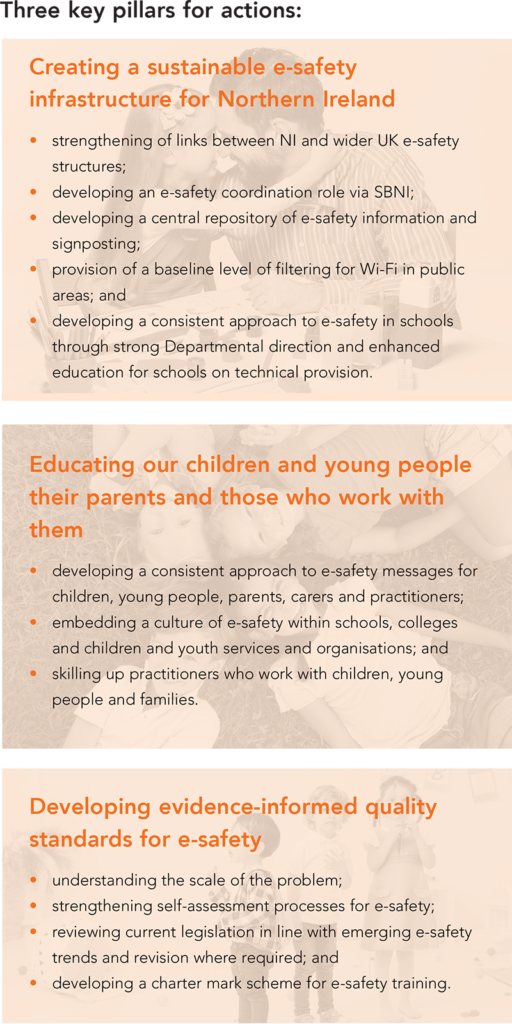Delivering an e-safety strategy

An e-Safety Strategy for Northern Ireland aimed at keeping children and young people safe online has yet to be signed off by the Executive.
Technology and its role in both enabling and endangering children and young people have been thrown into sharp focus as the Covid-19 pandemic and the associated restrictions introduced to manage its spread restricted many people to their homes.
Technology’s role as an enabler was greatly enhanced as new learning and communication methods for children were sought away from the classroom setting. On the other hand, there was also cause for concern as inevitably more children and young people were exposed to the safety and wellbeing risks that come with online access.
In January 2015, the then Executive, in recognition of growing concerns about the safety of children and young people online, agreed to bring forward an e-Safety strategy in Northern Ireland and commissioned the Safeguarding Board for Northern Ireland (SBNI) to develop an e-Safety strategy and an accompanying action plan on its behalf.
A draft strategy and three-year action plan was published and put out for consultation in March 2019 but a final strategy has yet to be published.
Digital natives, the name given to the current generation to whom the internet has become an integral part of everyday life, are now more than ever exposed to themes such as cyber-bullying, grooming and exploitation.
In a bid to define e-safety, the strategy sets out that e-safety relates to “using electronic devices in a safe, responsible and respectful way. It means safeguarding children and young people in the digital world and educating them to keep themselves safe online.”
It’s estimated that, in Northern Ireland, 75 per cent of 12 to 15-year-olds have a social media profile, a figure which drops to 25 per cent for eight to 11-year-olds. Harmful content, uninvited contact, poor conduct and commercialism have all been identified as risks by the UK Safer Internet Centre. This strategy emphasises “the need to deliver a strong and consistent level of knowledge for all children and young people by developing a core set of e-safety messages to help protect them from these risks”.
The type and levels of risks vary depending on a number of factors, namely: gender; age; physical or learning; mental health; sexual orientation; looked after children; young people attending education other than at school; black and minority ethnic groups and political opinion.
However, the strategy identifies a lack of evidence on the impact the internet and digital technology is having on much younger users, both positive and negative, and on the correlation between increasing usage and health and wellbeing indicators. It therefore outlines a need for “greater emphasis” on empowering children and young people to “navigate the digital world confidently, appropriately and safely, rather than restricting their opportunities”.
The strategy also acknowledges the pivotal role of parents and carers, as well as schools, colleges and youth services.
The primary outcomes for the strategy is that all children and young people are safe and secure online, with secondary outcomes including that all parents and carers are supporting their children to stay safe online; all those working with children and young people are supporting them to stay safe online; and the general public are supporting children and young people to stay safe online.
On this basis the core principles of the draft e-safety strategy are that all children and young people have the right to access and make use of online knowledge, provided it doesn’t cause harm to themselves or others, that children and young people must be supported to stay safe online and that children and young people must be educated and empowered to access the online world safely.
The strategy takes an outcomes-based focus. However, it also lacks any binding targets. Instead, many of the commitments are open-ended, for instance, the strategy commits to recognise the need for a prevention and early intervention approach to e-safety throughout service development and delivery and make use of innovative new tools and methods provided by the online world in order to disseminate information.
The three-year action plan was originally designed for the three-year period of 2019-2022. If the Executive moves to adopt the strategy, it’s likely that a review will now be necessary to ensure that it aligns with and recognises any future outcomes of the proposed Programme for Government.






